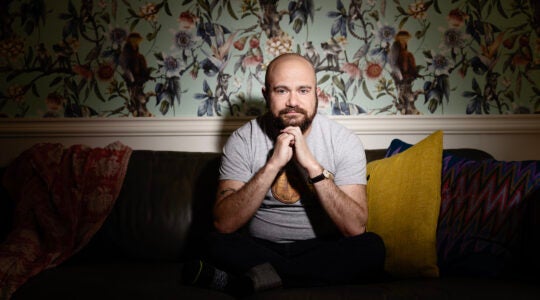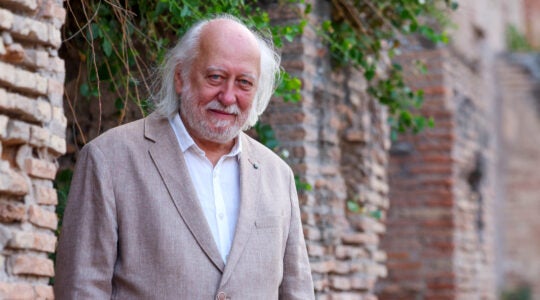The rate at which America’s Orthodox Jewish population is growing — and at which the non-Orthodox population is shrinking — is more dramatic than previously thought.
Meanwhile, significantly more adult children of intermarriage are choosing to identify as Jewish now than used to — and, as a result, over the past two decades intermarriage may have “contributed modestly” to a Jewish population increase.
These were the findings from two separate analyses of data from the Pew Research Center’s recent study of American Jews.
The finding about Orthodox growth and non-Orthodox decline, first reported in the Forward Tuesday, comes from Steven M. Cohen, a sociologist at Hebrew Union College-Jewish Institute of Religion and director of New York University’s Berman Jewish Policy Archives. Theodor Sasson, a senior research scientist at Brandeis University’s Cohen Center for Modern Jewish Studies, published the other finding Monday in Tablet.
Cohen parsed the Pew data and found that 27 percent of Jews younger than 18 live in Orthodox households; previously published Pew data did not indicate the proportion of Jewish children in Orthodox homes.
Cohen told JTA that for every 100 Orthodox Jewish 50-year-olds, there are 230 Orthodox 10-year-olds, and for every 100 non-Orthodox 50-year-olds, there are 70 non-Orthodox 10-year-olds.
“The Orthodox are moving in one direction and the non-Orthodox in the other direction,” he said, adding that the shift is “equally a function of birth rate and intermarriage.”
How to reconcile that with Sasson’s finding that the “propensity of adults with intermarried parents to identify as Jewish steadily increased” from generation to generation, and that 50 percent of Jewish “Millenials,” those born in the 1980s and ‘90s, grew up in intermarried homes? (Pew’s initial report said only that 25 percent of adult Jews are children of intermarriage, but it did not break the rates down by generation).
Cohen said the two findings are not contradictory.
“As Jews become more popular, people who have a choice are more likely to choose to be Jewish,” he said. However, he noted that the Millenials, many of them still single, may not identify as Jewish at such high rates once they wed. Should they intermarry, which they are statistically more likely to do, they will likely shift their identity from “Jewish” to “none,” he said.
“The other problem is they’re weakly engaged in Jewish life,” he said, adding that adult children of intermarriage are “not as productive citizens of the Jewish community as people who came from two Jewish parents.”
Sasson’s article makes a similar point, but in a more diplomatic way: “This is a population that feels itself a part of the Jewish world but typically knows little of it. How Jewish organizations address this challenge will determine — more than any inexorable laws of demography — the future character of American Jewry.”
For Cohen, both findings call for the same policy prescription: funding youth groups, Jewish camps, teen trips to Israel and “hiring rabbis to be available for those interested in conversion.”
“If we’re concerned about intermarriage, we should make it as easy as possible” for non-Jews to convert to Judaism, he said.
JTA has documented Jewish history in real-time for over a century. Keep our journalism strong by joining us in supporting independent, award-winning reporting.





